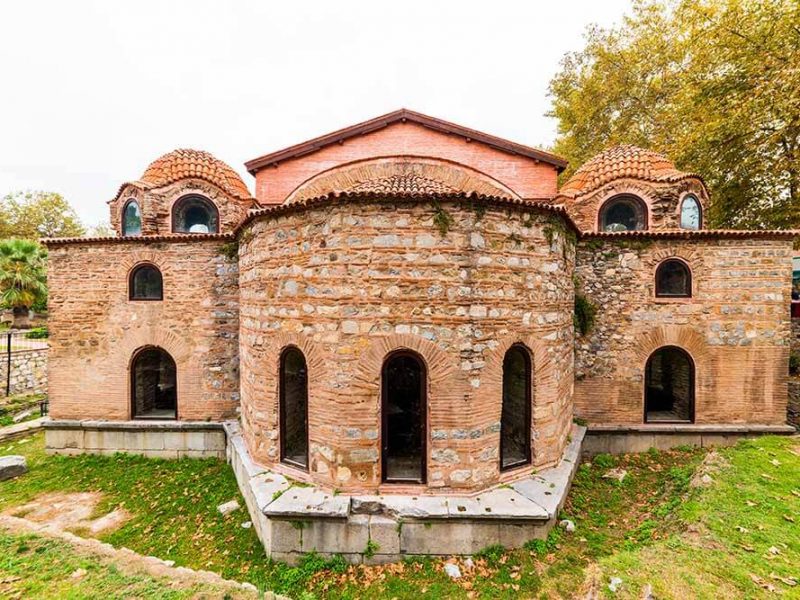Iznik, a village of Bursa, stands as a testament to our historical legacy. From mythological times, it has been a focal point of attraction and remains one of the most distinguished cities today. Enriched with both nature and historically significant sites, Iznik reflects a thousand years of Anatolian history. Located northeast of Bursa and housing 50,000 inhabitants, this little town boasts a rich past dating back to 2500 BC. It stands as a symbol of Ottoman culture, especially evident through its fertile lands and renowned tile craftsmanship.
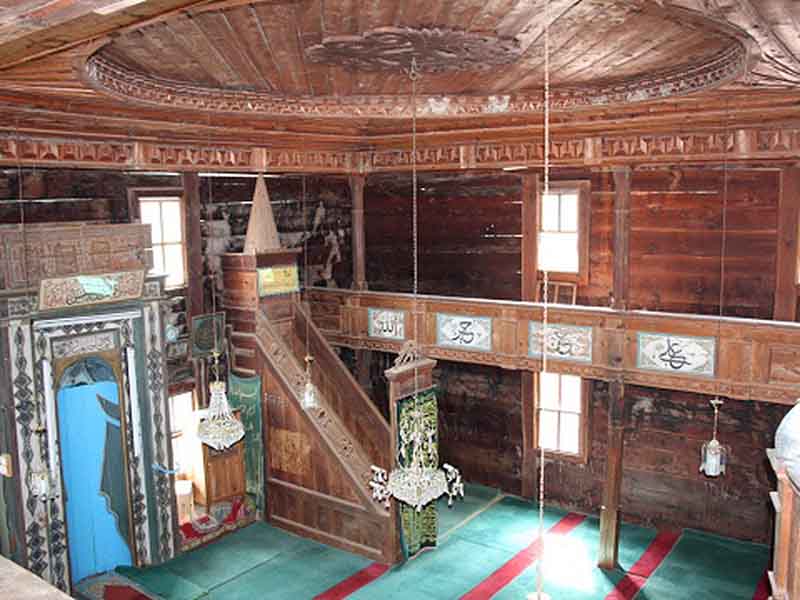
Elmalı Mosque
History of Iznik
The earliest evidence of settlement in Iznik traces back to 2500 BC. Around the 7th century BC, the area was named Helikare. By the 4th century BC, it was renamed Antigoni in honor of the Macedonian Emperor’s General, Antigonus. By the 3rd century BC, the city became known as Nikea and was annexed to the Roman Empire. Later on, Iznik became an important city of Rome. During the Crusades, when the Byzantine Empire lost Constantinople, Iznik served as the Byzantine capital.
Between 1075-1086, Iznik was the capital of the Anatolian Seljuk. After the Ottoman Empire’s siege during Orhan Gazi’s reign, Iznik fell into Ottoman hands. The city witnessed the construction of its first madrasa, mosque, and imarethane. Over the next three centuries, Iznik flourished as the cultural and artistic hub of the Ottoman Empire.
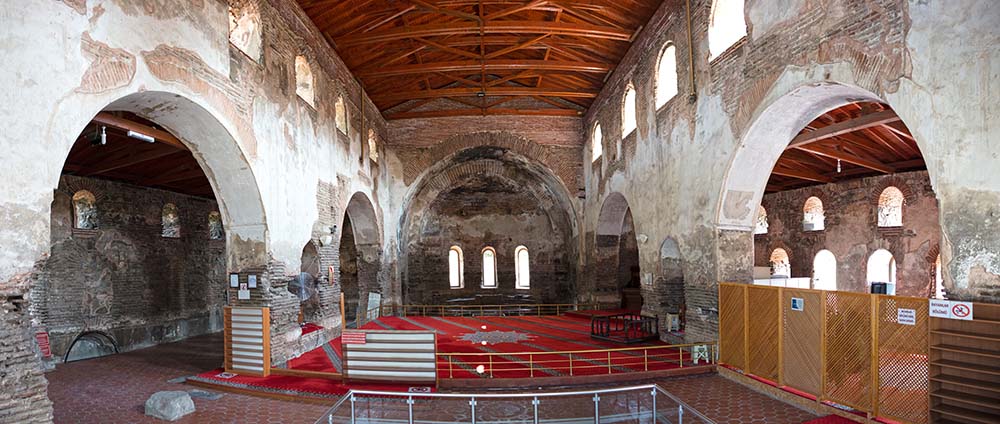
Hagia Sophia
Iznik Tiles
Iznik is renowned for its tiles, which were highly esteemed during the Ottoman era. From the city’s conquest up until the 17th century, artistic endeavors thrived in Iznik. Its tiles, known for their vibrant shades, especially of blue, can be found in prestigious locations worldwide, such as the Louvre Museum. These tiles were crafted by some of the most skilled artisans of the era. However, as Istanbul rose to prominence as the empire’s capital, Iznik’s artistry witnessed a decline.
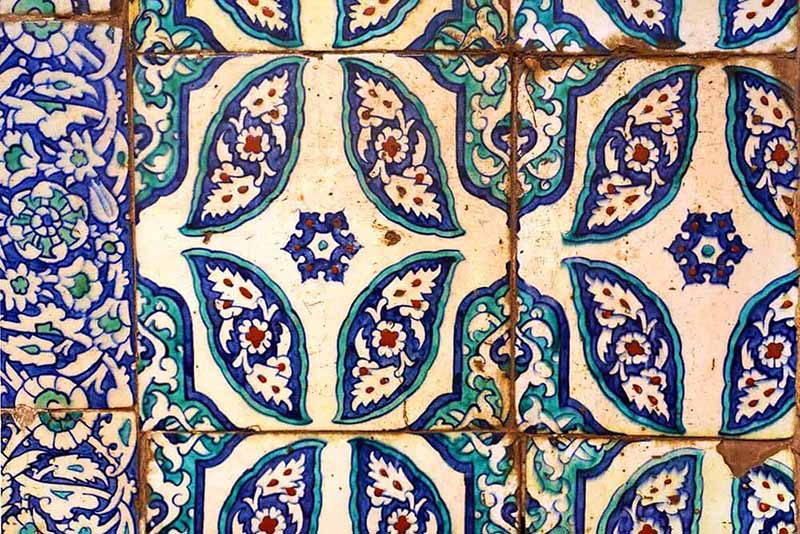
17th century Ottoman Turkish antique handmade tile motif from 1663 New Mosque (Yeni Cami), Istanbul, Turkey.
Iznik in Mythology
Iznik holds a special place in mythology as well. Legend has it that Iznik belonged to Dionysos. As the story goes, Dionysos, in his adult years, fell in love with Nyfme, a water nymph. The couple chose Iznik as their abode. Following their settlement, followers of Dionysos, the Bakhalar, migrated to Iznik, leading to a bustling city. The city’s popularity in mythology is attributed to its fertile lands, which yield delicious nuts, pomegranates, quinces, peaches, and cherries. Furthermore, Iznik’s mild climate made it a coveted location during the Ottoman era.
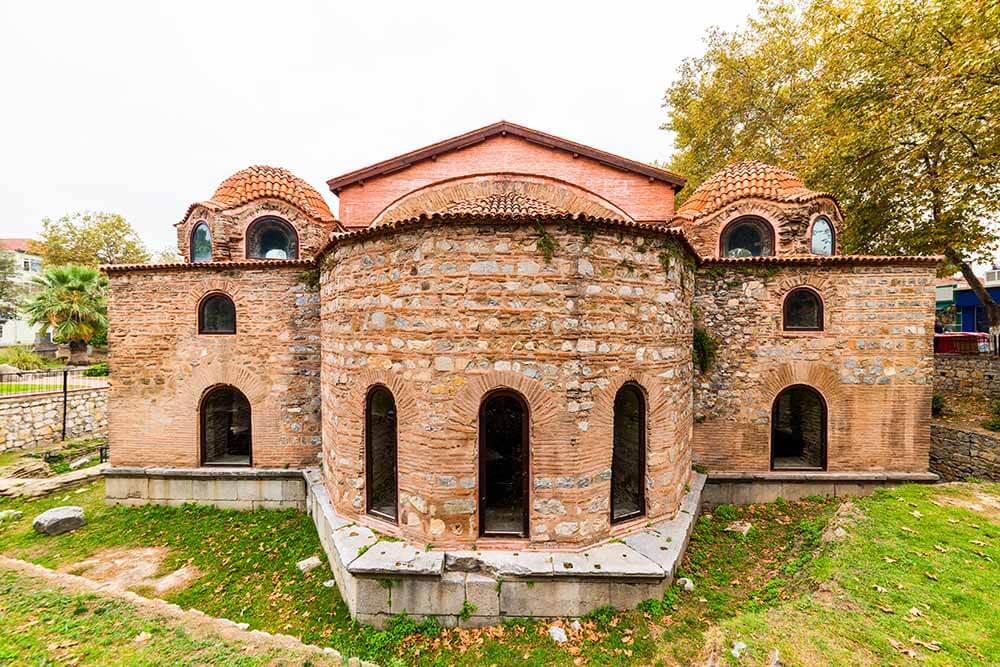
Hagia Sophia Mosque (Iznik Ayasofya Orhan Camii). Historical old Byzantine church. First built as a church, It was converted to a mosque. Iznik, Bursa, Turkey.
Places to Visit
- Dört Tepeler : This ancient burial mound stands as a testament to Iznik’s rich history and the civilizations that once thrived here.
- Çivisiz Mosque: Elmalı Wooden Mosque, built in 1884 using interlocking wooden materials without using a single nail, is located in Elmalı Neighborhood, at the foothills of Samanlı Mountains, 55 kilometers from the center of the town.
- Hypoge Funerary Monument: A unique underground burial structure that showcases the architectural prowess of ancient inhabitants.
- Beştaş Obelisk: This towering monument offers a glimpse into the artistic and structural designs favored during its era.
- Berber Kaya Monument: A rock-carved monument that stands as a testament to the region’s ancient craftsmanship.
- Senatus: This ancient site bears witness to the administrative gatherings of the past, serving as a focal point for decision-making.
- East Roman Palace: A magnificent structure showcasing the grandeur and architectural excellence of the Roman era in Iznik.
- Ancient Theatre Walls and Doors: These remnants of an ancient theater provide a window into the entertainment and cultural practices of bygone times.
- Hagia Sophia Church: An architectural marvel, this church has witnessed centuries of history and remains a spiritual sanctuary.
- Koimesis Church: Another testament to Iznik’s rich Christian heritage, this church boasts intricate designs and a peaceful ambiance.
- Hacı Özbek Mosque: A pristine example of Islamic architecture, this mosque stands as a beacon of Iznik’s religious diversity.
- Green Mosque: Known for its verdant tiles and splendid design, this mosque is an iconic structure in Iznik.
- Mahmut Çelebi Mosque: Another beautiful example of Ottoman architecture, this mosque invites visitors to experience serenity and reflection.
- Aya Trifon Church: A testament to the coexistence of different faiths in Iznik, this church showcases the harmonious blending of architectural styles.
- Rüstem Paşa Hanı: A historically significant caravanserai, it once served as a resting place for traders and travelers.
- Meydan Bath: An ancient public bath, it offers insights into the daily life and hygiene practices of past inhabitants.
- Justinian Waterway: A remarkable engineering feat, this waterway ensured the consistent supply of water to the city’s residents.
- Archaeology Museum: This museum houses artifacts and exhibits that chronicle Iznik’s vast history, offering a journey through time for its visitors.
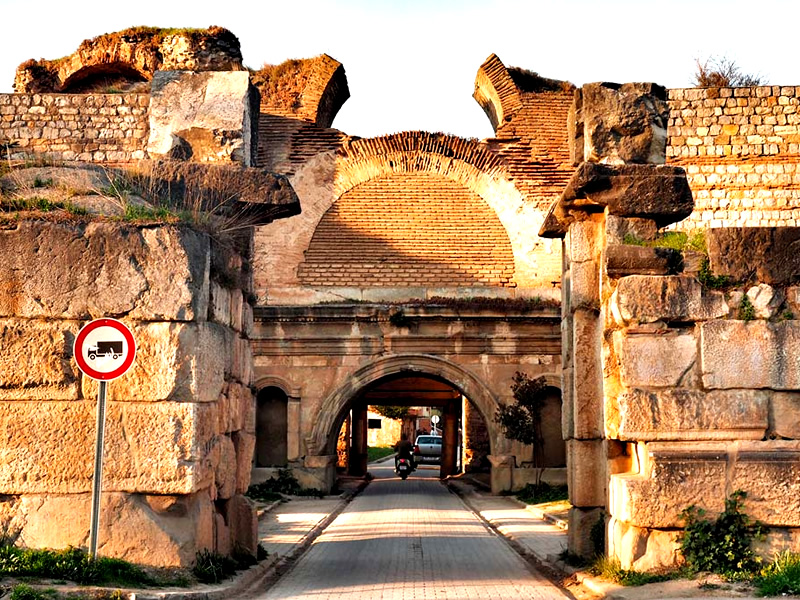
Walls of İznik

